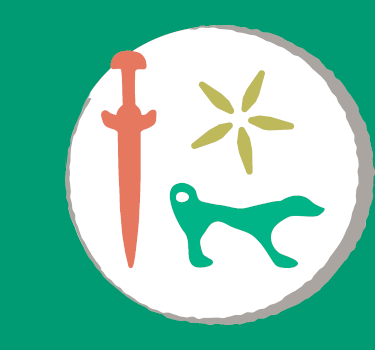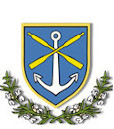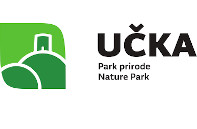Prehistoric hillforts and ethnobotany for sustainable tourism and rural development – from the Karst (via Brkini, Čičarija, and Istria) to Kvarner.
Istria, the Karst, Čičarija, Brkini, and a part of Kvarner share many common natural features as well as a shared history. This was a densely populated transit area during the Neolithic and antiquity, as evidenced by the surprisingly dense distribution of prehistoric hillforts (locally known as kašteljeri, kašteliri, or zidine), almost completely forgotten cultural heritage of the areas separated by country borders.
This project aims to re-establish the ancient connection between people’s lives and plants and present it in a modern way to be used for sustainable tourism and ecological environment management. The main theme of the project are the remains of hillforts that were erected in the area in the Bronze Age and prospered in the Iron Age. Today, they are overgrown with shrubs and forests. With emigration, overgrowth, the loss of tradition and connections with the ancient past, we also lose knowledge about the plants that grow in the area and their use. That is why we want to revive this knowledge, promote it and spark interest among tourists but also the locals, who could (again) manufacture traditional products using old methods and recipes and offer them to tourists.
The main project goal is to actively preserve the heritage of the area between the Karst and Kvarner by developing an innovative sustainable cross-border tourist offer. The expected key project results are:
- four selected hillforts revitalized,
- trail “Hillforts (castellieri) from the Karst to Kvarner”,
- a center for the promotion of hillforts and traditional use of plants (Čičarija) and information points at selected hillforts,
- botany – a list of useful plants from the hillforts and the surrounding area, genetic seed bank, glossary and manual for the use of useful plants and plant collection guide,
- archaeobotany – a list of plants from the periods of prehistoric hillforts,
- ethnobotany – examples of using plants and plant products,
- presentation of the way of life in prehistoric hillforts,
- eight educational trails in the area surrounding the four revitalized hillforts and their promotion using ICT,
- education and training related to the hillforts,
- development of sustainable tourism products for the promotion of heritage.
The results will help achieve performance indicators – an increase in the number of visitors to the cultural and natural heritage sites in the program area that are not yet (sufficiently) developed in most of the program area.
The most important project result will be raising the awareness of the necessity to preserve the cultural and natural heritage and return to nature through learning about, collecting and cultivating, processing and consuming useful plants. The key emphasis will be on the importance of sustainable activities in the development of rural areas and cross-border tourism. At the same time, the project will also encourage social life in the project area villages, contribute to their visibility and increase the diversity of the tourist offer in the area between the Karst and Kvarner. This will be an important basis for stimulating the return of the population who left the area mostly for economic reasons. The revitalized area would also become attractive to newcomers who appreciate life in untouched nature full of cultural wealth and natural resources.

Lead partner:
- Municipality of Komen, Slovenia
Project partners:
- Municipality of Izola, Slovenia
- University of Maribor – Faculty of Natural Sciences and Mathematics and Faculty of Arts, Maribor, Slovenia
- IRRIS – Institute for Research, Development and Strategies for Society, Culture and Environment, Koper, Slovenia
- Istrian County, Pazin, Croatia
- Municipality of Mošćenička Draga, Croatia
- Municipality of Lanišće, Croatia
- Učka Nature Park, Lovran, Croatia
Associated partners:
- Institute for the Protection of Cultural Heritage of Slovenia, Ljubljana
- Koper Regional Museum, Koper
- Škocjan Caves Public Service Agency, Škocjan
- Tourism and Hospitality Chamber of Slovenia, Ljubljana
- Municipality of Koper
- Municipality of Ilirska Bistrica
- Municipality of Hrpelje – Kozina
- Municipality of Divača
- Municipality of Pivka
- Krasen Kras Institute, Gorjansko









